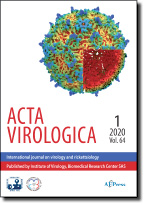Acta Virologica Vol.57, No.2 p.180-199, 2013
|
| Title: Update on Rickettsioses in Slovakia |
| Author: Z. SEKEYOVÁ, C. SOCOLOVSCHI, E. ŠPITALSKÁ, E. KOCIANOVÁ, V. BOLDIŠ, M. QUEVEDO DIAZ, L. BERTHOVÁ, M. BOHÁCSOVÁ, J. VALÁRIKOVÁ, P. EDOUARD FOURNIER, D. RAOULT |
|
Abstract: The reported incidence of vector-borne diseases including various cases of Rickettsioses in humans is increasing due to a combination of climatic and social factors, escalating the opportunities for contact between people and ticks, fleas or lice. Many of the emerging infectious diseases currently challenging human health in Europe are transmitted by ticks which normally feed on domestic or wild animals. Each Rickettsia spp. has one or several tick vectors, and their geographical distribution varies according to geographical conditions; e.g.; altitude or temperature, which is gradually changing due to a global warming. Evidence of Rickettsia spp. particularly of a newly discovered species is a strong indication that a great number of diseases may be caused by so far undetected or unrecognized organisms. Their diagnosis relies mostly on rare “spot like” cooperation of clinicians with scientists, the members of the working groups that are devoted to the scientific studies of the corresponding research areas. The clinical picture of the disease caused by rickettsiae varies significantly from flu like symptoms to severe fatal outcomes, reflecting the various factors, e.g. a variability of virulence of rickettsial species due to cell invasion, dissemination of rickettsiae, genomics, immune response of an infected organism, or a tricky impact of a treatment. Several major reviews on rickettsioses have been previously published, e.g. in 1997 (Raoult and Roux, 1997a), in 2005 (Parola et al., 2005), and in 2011 (Botelho-Nevers and Raoult, 2011). In this work we intend to present a short historical overview and to describe new trends in research studies of rickettsiology. The main focus will be on rickettsioses affecting Europe΄s population.
|
|
| Keywords: rickettsiae; tick; lice; fleas; vector; Slovakia |
|
|
|
| Year: 2013, Volume: 57, Issue: 2 |
Page From: 180, Page To: 199 |
doi:10.4149/av_2013_02_180
|
|
 download file download file |
|
|
|
|
 download file
download file
